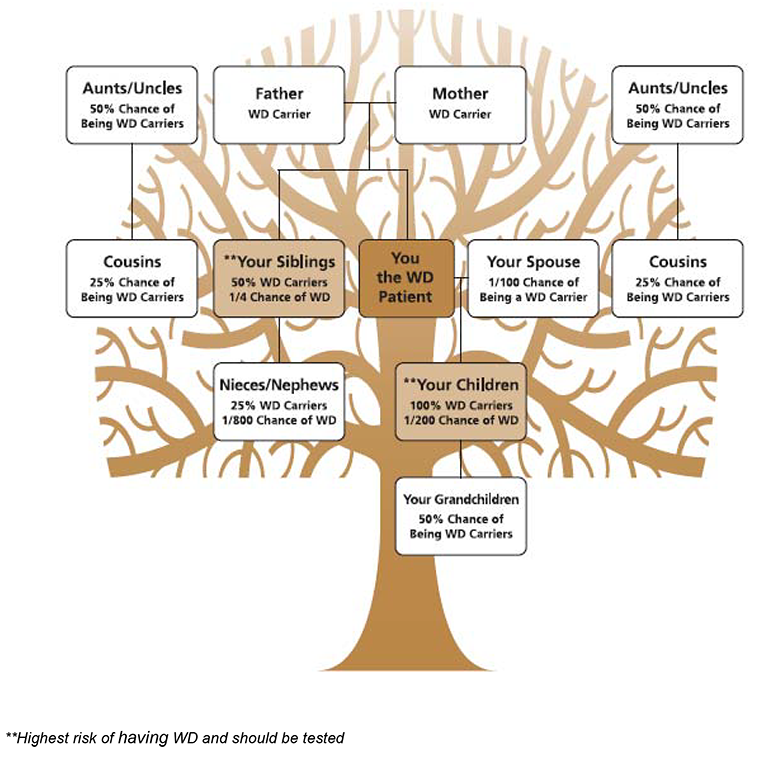How is Wilson disease inherited?
Wilson disease is an autosomal recessive disease, which means in order to inherit Wilson disease, both parents must carry at least one genetic WD causing mutation (abnormal alteration in the gene) that each parent passes to the affected child. Each child of parents who are both carriers has the same 25% chance of inheriting two WD causing mutations. At least one in 30,000 people of all known races and nationalities has the disease.
Of the 23 different human chromosomes, the gene responsible for Wilson disease is located on chromosome 13. The gene is called ATP7B and it contains the genetic information necessary to make a copper transport protein that plays a key role in incorporating copper into ceruloplasmin and moving excess copper out of the liver. Mutations in the gene lead to an abnormal copper transporter that cannot move copper effectively or at all. This excess copper accumulates in the liver and other organs.
Most patients have no family history of Wilson disease. People with only one abnormal gene are called carriers. Carriers (heterozygotes) may have mild, but medically insignificant, abnormalities of copper metabolism. Carriers do not become ill and should not be treated. One in 90 individuals in the general population is a carrier of Wilson disease. Wilson disease patients (homozygotes) do become ill and must receive treatment lifelong or eventually they will develop severe lethal disease. All (100%) children of those afflicted with Wilson disease receive at least one abnormal copy of the Wilson disease gene from the parent who has WD, and therefore, are at least carriers.
The diagram below shows the basic risk profile for family members. A genetic counselor can provide a more detailed pedigree of specific family relationships.

Family screening
All siblings and children of Wilson disease patients should be tested for Wilson disease. Other relatives who have had symptoms or laboratory tests that indicate liver, neurological, or psychiatric disease also should be tested for Wilson disease. This screening may be done by the same lab and imaging tests used to diagnose WD, or by genetic testing. However, more than 700 mutations of the ATB7B gene that can cause Wilson disease have been identified thus far, and more are being discovered all the time. Therefore, a negative genetic test result does not necessarily rule out WD.
Genetic testing is best coordinated through a genetic counselor who can carefully discuss the best method of testing to perform and the benefits, limitations, and implications of each method. Your physician should be able to direct you to a qualified genetic counselor and genetic testing facility.

